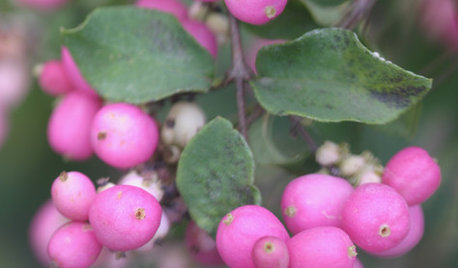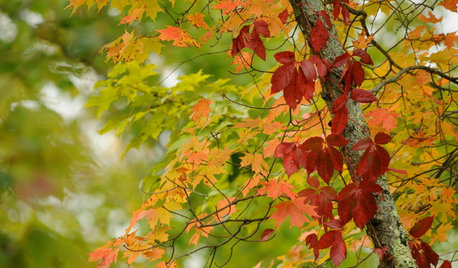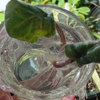Red on the leaf-reverse ....now what?
Begonia2005
11 years ago
Related Stories

DECORATING GUIDESHow to Love Your Kitchen More, Right Now
Make small changes to increase the joy in your kitchen while you cook and bake, without shelling out lots of dough
Full Story
TRAVEL BY DESIGNHouzz TV: Take a Leaf-Peeping Road Trip in New England
Ride along with a Houzz contributing photographer to see gorgeous autumn eye candy from New York to New Hampshire
Full Story
BEDROOMSTrending Now: 25 Bedrooms We’d Love to Fall Asleep In
Looking for a comfortable and calm space? Consider some of the most popular new bedroom photos on Houzz
Full Story
LANDSCAPE DESIGN5 Berry-licious Shrubs to Plant Now for Winter Interest
Showy color during snow season? You bet. These shrubs will wake up a garden with colorful berries when other plants are asleep
Full Story
KITCHEN DESIGNTrending Now: 25 Kitchen Photos Houzzers Can’t Get Enough Of
Use the kitchens that have been added to the most ideabooks in the last few months to inspire your dream project
Full Story
KITCHEN DESIGNCooking With Color: When to Use Red in the Kitchen
Candy Apple Red, Red Licorice and more for your kitchen walls, cabinets or island? The color choices are as delicious as they sound
Full Story
KITCHEN DESIGNKitchen of the Week: Red Energizes a Functional White Kitchen
A client’s roots in the Netherlands and desire for red countertops drive a unique design
Full Story
ROOM OF THE DAYRoom of the Day: Bright Red Dining Room Glows in Fog City
Mist can put a damper on the mood in San Francisco, but this lively room fires up the energy
Full Story
KITCHEN DESIGNKitchen of the Week: Splashes of Red for a Country Classic
Modern touches combine with traditional style in this warmly elegant kitchen in the English countryside
Full Story
COLORFall on the Wall: Decorating With Rich Reds, Browns and Oranges
For your interiors, take a cue from nature’s colorful seasonal offerings
Full StoryMore Discussions








aharriedmom
Begonia2005Original Author
Related Professionals
Windham Landscape Architects & Landscape Designers · Hershey Landscape Architects & Landscape Designers · Salisbury Landscape Architects & Landscape Designers · Stamford Landscape Contractors · Maple Valley Landscape Contractors · Brockton Landscape Contractors · Dunwoody Landscape Contractors · Natick Landscape Contractors · New Cassel Landscape Contractors · North Haven Landscape Contractors · Olympia Landscape Contractors · Quincy Landscape Contractors · Soddy Daisy Landscape Contractors · Waipahu Landscape Contractors · Yukon Landscape ContractorsGCTBA
Begonia2005Original Author
Begonia2005Original Author
taxonomist3
Begonia2005Original Author
aegis1000
taxonomist3
Begonia2005Original Author
taxonomist3